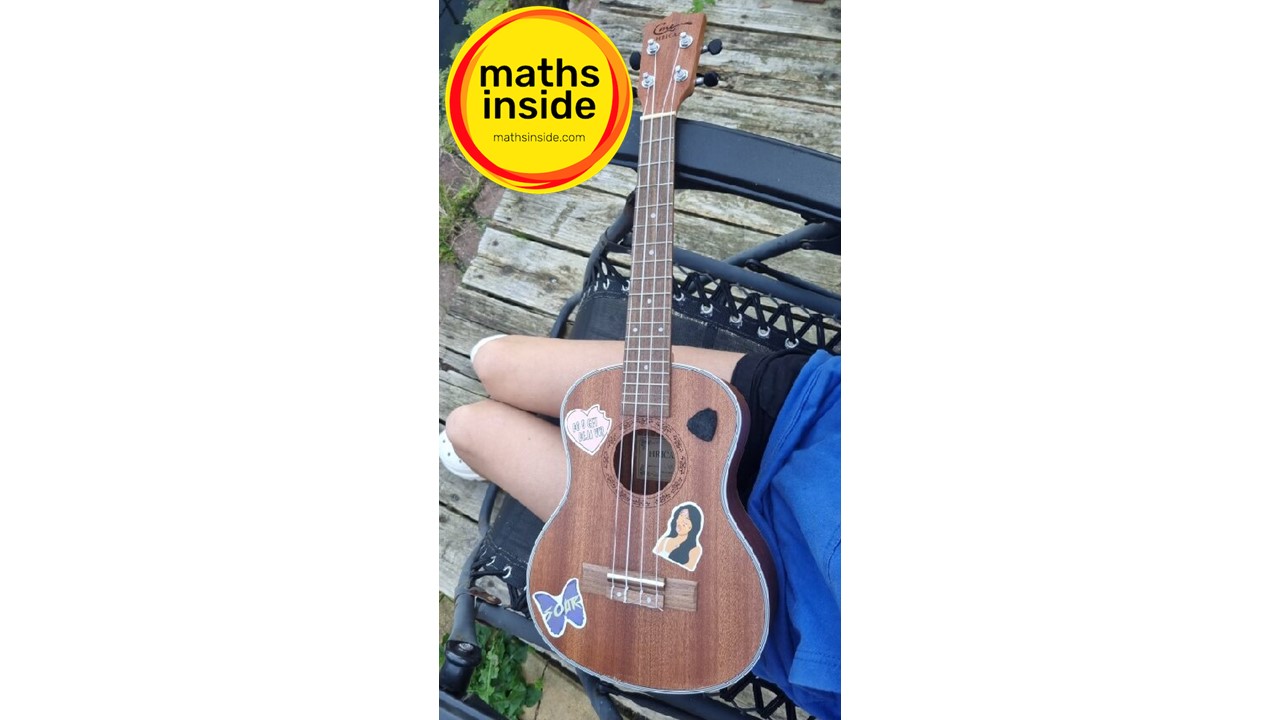Ukulele Maths (the 'why' of shapes)

I took a photo of my ukulele, because though a lot of people don’t know, music has a lot of maths behind it (also because I find it more interesting than playing the piano)! To start off simple, everyone says a ukulele is the shape of the number “eight”. It is like this because this shape helps the distinctive sound of the ukulele by allowing for a larger soundboard area, which boosts the instrument’s resonance and volume. I also have a ukulele pick that I play with, and it’s the shape of a triangle. Why? Well simply because the triangular shape of it provides players with different edges to produce varying tones and sounds when strumming or picking the strings. Now, is there any actual math behind the ukulele? Of course there is, maths is everywhere! Understanding the rhythm and timing involves mathematical concepts such as fractions and counting. More maths is involved in Fret spacing (mathematical ratios). The placement of frets on a ukulele is a precise mathematical formula. The distance between each fret is a specific number of cm, which every ukulele should have/has. There is also string tension and frequency by the vibration. The pitch of each string on the ukulele depends on its tension and length. Maths is also in waveforms and harmonics, because when a ukulele string is plucked, it creates a fundamental frequency and various overtones. And lastly, there is maths involved with the tuning of the ukulele. Tuning a ukulele follows specific frequencies, for example, standardly, tuning the notes,G,C,E and A, you must be very precise with the tension/looseness. In conclusion, a ukulele involves geometry, physics, ratios, string tension, tuning, all making up to its unique sound.
In the background, you can see the wooden planks, but why are wood planks rectangular? They are like this because it makes things easier and more efficient, and here’s why: Easy to measure, less waste, fit together perfectly, strong and sturdy and they are easy to stack and transport.
— Brigita Svirplyte (S1)